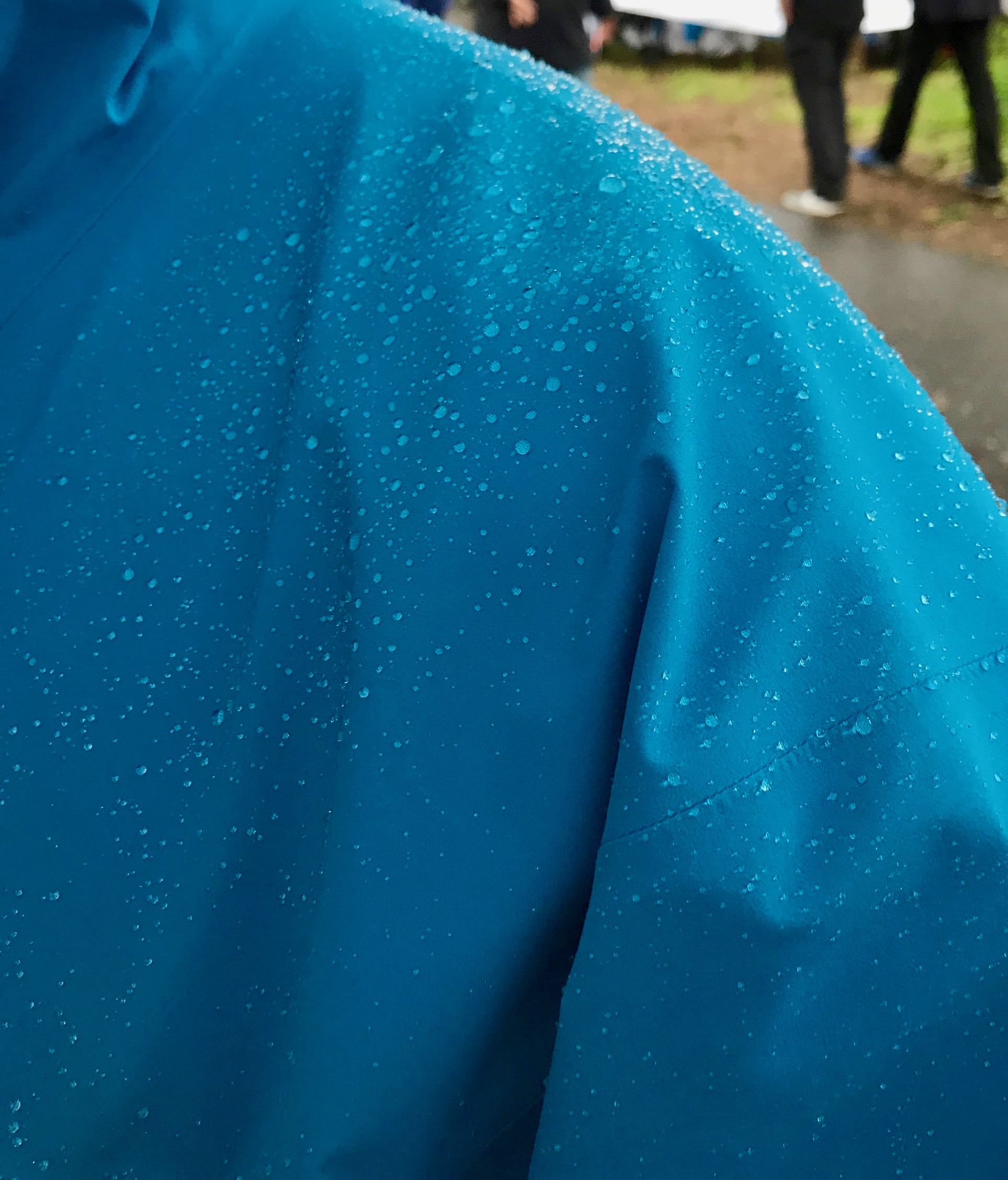DWR - Durable Water Repellent and you
You knew there might be weather, I mean obviously there would be weather, whether you want it or not there is always weather. But "bad" weather, you knew there was a chance that would come too. And yet you continued packing. Shelter, sleep system, food and cook gear, layers, and finally, stuffed at the top of your pack, because you know what the weather could be, your rain gear.
The winter had been long, with many days in the backcountry and a fair share at the resort. Snow, the cold rain, sweat, all had soaked your jacket throughout the winter. There was the day you changed your tire in a parking lot on Turnagain pass. The next weekend pushing your buddies car through the plow berm. Snow machines filed with oil, gas, dirty trailers getting hitched and unhitched. All the while your waterproof breathable shell gear was there, keeping you warm and dry.
By spring your ready for the change of seasons. Thoughts of long hikes, boat trips into the sound, bike adventures. And after that first night of bikes and beer, the local social group ride (note the beers come after the biking, in name and fact.) You are worried about your gear. The still cold spring rain seems to soak into your rain jacket, saturating the outer shell. And yet you remain warm, if not a tad bit moist inside your shell. At home, you wonder if this trusty shell is done for. The whole ride you felt wet, was it sweat? Leaking? Your used-to-be trusty rain shell is hung on it's hook, left to dry, cold and wet, saturated.
There is hope for that hard working shell. From the factory, your jacket or pants came coated with a "durable" water repellent finish, or DWR. A chemical coating on the outside, face fabric of your garment. This coating causes water droplets falling from the outside to bead, maintaining a large proportion of the fabrics surface area as "dry" nylon. This is critical to the performance of the waterproof breathable laminate or coating on the back of that nylon face fabric. Over time, the DWR wears off. At the same time, while you are wearing your garment, the pores of the waterproof breathable laminate are getting filled with oils from your skin, salts from perspiration, and dirt from the beautiful world you play in.
Waterproof breathables work because a warm, moist air space (inside your jacket) is driving moisture through a microscopic membrane to a colder, theoretically drier space. The DWR on the outer shell keeps enough of that nylon dry that the water vapor created by perspiration and body heat can be driven through to the surface which is "dry" because of that DWR. If the DWR is worn away, through use, or laundering, the nylon face fabric can wet out, or become saturated, reducing the "dry" surface area that water vapor is passed to, through the waterproof breathable membrane. Because the outer face fabric is saturated, the water vapor from the inside, can't get to the outside, so that moist, clammy feeling is real, but your jacket isn't necessarily leaking, your just getting wet from the inside.
So here's the solution. Wash your jacket. Yup, it all starts with that simple step. Dry it according to manufacturers recommendation. This alone may boost the performance of any remaining DWR, and will increase the breathability of the membrane by clearing the microscopic pores of dirts and oils.
I was once told by a manufactures rep that ironing your shell would realign the pores of the laminate, making for a more uniform pore structure within the laminate to aid in breathability, one would think drying (in the dryer with heat) the garment could do the same, though it also has a motion component to it.
Nikwax Tech Wash and TX.Direct. Any non detergent laundry soap can be used to clean your gear. DWR can be washed in or sprayed on.
Now you can add a new coating of DWR. There are many available options, both wash in and spray on. Most are easy to use and your garment will seem to instantly perform better. Nikwax and Revivex are two well know and readily available products and the team at ProLite gear have an great video comparing the two.
In the never ending paradox of the environmental impact of outdoor gear, I would be remiss to not mention the environmental issues associated with DWR treatments. In order for our "miracle" fabrics to perform correctly, we need DWR, but both factory DWR and aftermarket products have historically been made of chemicals that either do not, or take a long time to break down. In particular, flourocarbons or perfluorinated chemicals (PFCs) have been the primary DWR of choice in performance outdoor gear. Many manufacturers are seeking out alternatives because these chemicals produce byproducts that are toxic and pervasive in the environment. In an article by Outside online from August 2015 it was stated "The toxin, which plays a role in many industrial applications, has made its way into the environment, and small amounts are found everywhere, from the blood of polar bears to the blood of most humans." This has led to most manufacturers moving to a different chemical that has fewer toxins, but is less durable. Additionally, some companies are taking the development of a new effective DWR into their own hands. Patagonia, often at the forefront of environmental issues caused by or effecting the outdoor industry has invested $1 million into a Swiss company working on non-toxic alternatives. All of this should serve as a reminder that our love of nature sometimes has bigger impacts than just our visible ones.
An effective water resistant coating is critical to the proper function of modern waterproof breathables. Maintaining that coating is easy, relatively inexpensive and should be done as needed.


